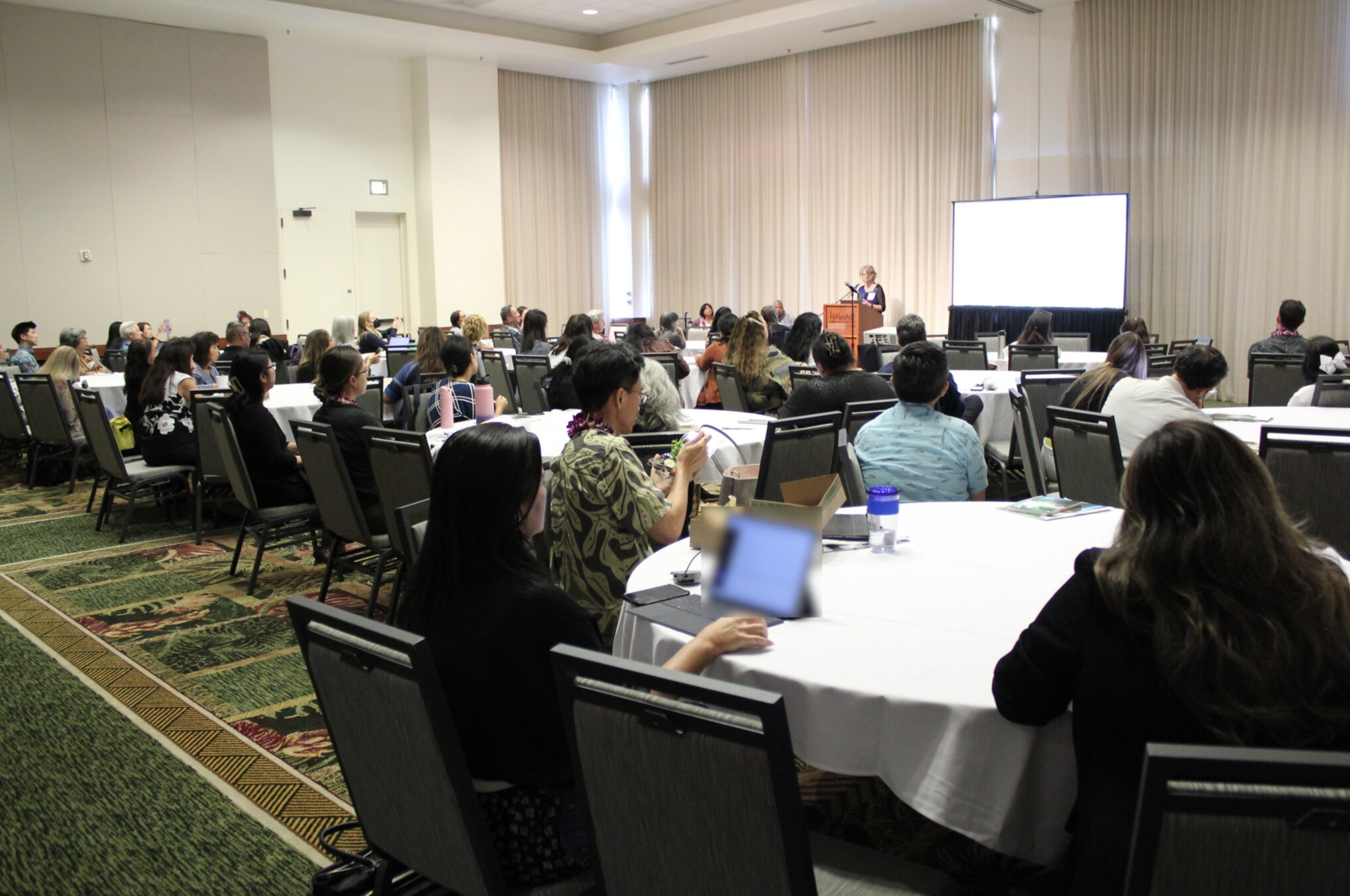The Hawai‘i State Department of Health (DOH) convened more than 250 stakeholders, advocates, and visionaries across the state to discuss the Healthy Hawai‘i Strategic Plan 2030 (HHSP). Since its launch in 2021, the HHSP has been a roadmap for improving the health of Hawai‘i residents by preventing and reducing chronic disease. The Summit showcased local and national presenters highlighting best practices and success stories to equip and inspire participants to continue their efforts advancing the HHSP objectives so everyone in Hawai‘i has equitable opportunities for good health.
With the goal of full implementation by the year 2030, the activities outlined in the HHSP invest in prevention by creating environments, policies, and systems statewide that support wellness. Completed HHSP activities showcased during the Summit included:
- Transformation of Kalena Park and development of the Līhuʻe Loop project, a 1.3-mile self-guided audio walking tour, encouraging physical activity while educating residents and visitors on points of interest significant to the history and culture of Līhuʻe town;
- Launch of HI DPP, Hawai‘i’s online Diabetes Prevention Program, pairing participants with a personal health coach and online peer group to support healthy lifestyle changes;
- Passage and implementation of Act 62 to combat Hawai‘i’s youth vaping epidemic by addressing the online sale of e-cigarettes and taxing e-cigarettes as tobacco products;
- Development of a cancer survivorship resource guide that provides follow-up care, lifestyle, psychosocial, and financial information to cancer survivors and their caregivers;
- Implementation of communications campaigns, including Stronger Together to raise awareness about the tobacco industry’s targeting of Hawaiʻi residents based on age, income, culture, identity, and the challenges they face; Control Asthma to illustrate simple ways for parents and keiki to identify and control asthma triggers; BE FAST for Stroke to raise awareness about the common signs of stroke and importance of calling 9-1-1 immediately; and Sweet Lies! to educate parents about the negative health effects of consuming sweetened fruit drinks and the deceptive marketing strategies used by the beverage industry;
- Expanded access to fresh, local produce at Farmers Markets and Food Hubs for Women Infants Children (WIC) participants using WIC electronic benefits transfer (EBT); and
- Implementation of Kauaʻi County Play Streets events for children and families living in rural areas or neighborhoods that lack playgrounds to encourage physical activity by temporarily closing a street (or set of streets) to create a safe space for residents to engage in active play.
“Studies have shown that an individual’s zip code is a better predictor of their health than their genetic code,” said Lola Irvin, Hawaiʻi Department of Health Chronic Disease Prevention and Health Promotion Division Administrator. While Hawai‘i has the highest life expectancy in the nation, a review of Hawai‘i’s statewide data in 2012 showed that life expectancy ranged by zip code from 73 years to 87 years, a 14-year difference. DOH is in the process of conducting another study with updated data. “Access to healthy food, safe spaces to be physically active, and quality health care directly affect our ability to lead healthy lives. HHSP stakeholders, including the Department of Health, are committed to partnering with communities to transform the places where people live, learn, work, and play to put healthy options within reach, and make the healthy choice, the easiest choice.”
In addition to providing a forum to showcase the strides that have been made since its launch, the Summit fostered connections among participants, renewing their commitment to a healthier Hawai‘i. Together, the HHSP stakeholders continue to realize the vision of a future Hawai‘i where every person can attain their full health potential. To view the HHSP or to get involved in this transformational process, visit www.HHSP.hawaii.gov.


